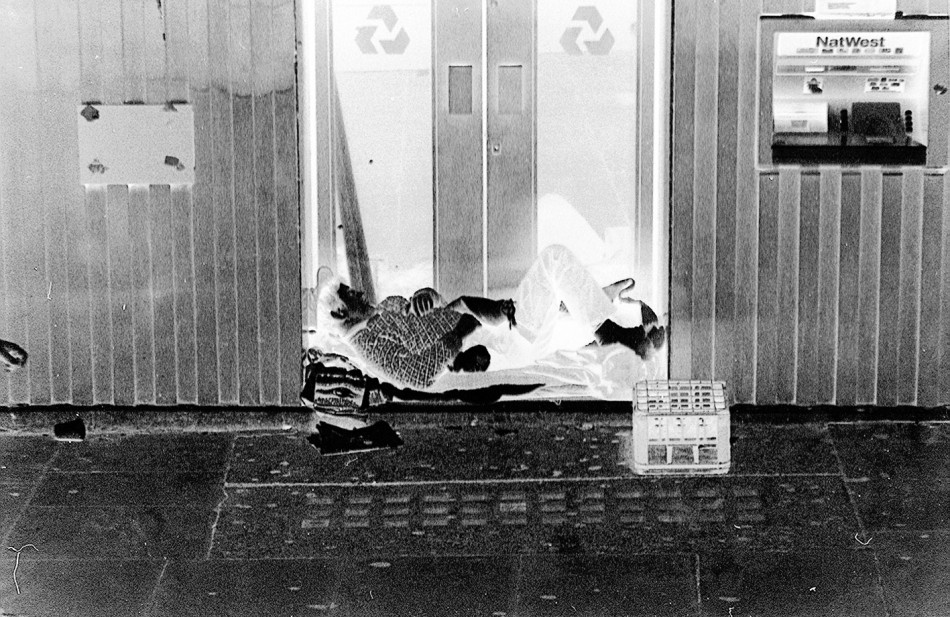When I moved to London in 1997, it hit me that so many people were sleeping rough in the centre of the city. One day I was in a big hurry to make it to an exam at the College and was going through Soho to pick up some films for a project. It must have been around 11am. Right next to the shop I was going, there was a guy wrapped in a sleeping bag, his face didn’t look good. I stopped and looked at him, trying to understand if he was breathing. In the time I was standing there, 50 people must have gone by; everyone knew someone was lying there, but nobody cared. When I realised the guy was still breathing, I went off, picked up my films and jumped in a cab to make it to my exam.
The thought that stuck with me was, what would I have done if this guy wasn’t alive. Does living in a big city assume you must be mentally insulated from this sort of encounters? A lot of people were sleeping rough in London at that time, and certainly not everybody made it out of the streets. Most of us pretend they’re not there. I didn’t like this. I didn’t understand much about the social or cultural context of this city, or this country, but I felt I should do something about it. So I designed something for them, if not for anything else, for understanding why people sleep on the street, how do they survive, do they ever have a chance of getting out.
I designed a wearable homeless shelter – a sleeping bag that transformed into a tent during the night and into a garment that could be worn during the day. I made 60 shelters and distributed them to homeless people in London – mostly at the “cardboard” city behind the Savoy hotel. A friend cinematographer filmed the whole process – discovering where homeless people spent the night, talking to them, demonstrating and distributing the shelters and going back a few days later to find out if any of them were still in use. You will find some screenshots and a video below.
People look but the see no body…
On the Streets





